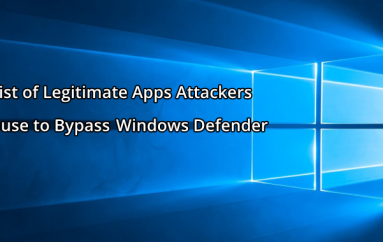
The next great threat from hackers: drones?
Ryan Satterfield was testing out his new Parrot drone in his backyard in Camarillo, California, when suddenly he wondered: Could it get hacked? Since Satterfield, founder of information security company Planet Zuda, uncovers hacking vulnerabilities for a living, it didn’t take long for him to discover a way to take over the aircraft remotely. He opened up his laptop, connected to the drone using an open network that wasn’t password-protected, used tech for accessing remote computers, then typed the ominous command “kill 1.” Sure enough, the drone promptly fell out of the sky and crashed to the ground. (Satterfield reached out to Parrot before sharing this vulnerability with the public, though Parrot didn’t respond to OZY’s request for comment.)
As technology propels drones forward to more widespread adoption, the threat of hackers intercepting them looms. Indeed, it’s high time for the integration of unmanned aircraft systems across the U.S.: Since the Federal Aviation Administration’s requirement for registering drones for recreational use kicked off at the end of 2015, more than 250,000 drone owners have signed on. In the commercial sector, more than 1,000 drone permits have been approved by the FAA, and the total domestic economic impact is forecasted to reach $82.1 billion before 2025, according to the Association for Unmanned Vehicle Systems International.
Already, drones are being used for a wide range of functions today, from providing surveillance for the military and law enforcement to taking aerial snapshots, delivering medical supplies to people in remote areas, finding missing persons or even counting the number of endangered species in a given location. But in an era when hackers are targeting everything from retail stores to insurance company databases and even automobiles, it’s no surprise that the worlds of drones and breaches could soon collide, sparking costly, and dangerous, consequences. “What happens with any new technology is that we deploy them, and don’t lock them down properly until things go wrong,” says Ryan Calo, an assistant professor of law at the University of Washington. “What we’re seeing with drones is no different.”
There’s the risk of drones being used to help frame crimes, since it’s now possible for cybercriminals to hack into drones and upload fictitious videos.
Some frightening scenarios that have unfolded suggest it’s just a matter of time before dangers mount. For example, in January, the U.S. Department of Homeland Security and the U.S. Customs and Border Protection agency reported that drug traffickers hacked the GPS of U.S. border patrol drones to make it possible for them to cross the border with Mexico illegally and avoid surveillance. (DHS didn’t respond to our request for comment.) Back in 2011, Iran was said to have hacked a CIA spy drone and forced it into a soft landing to probe the aircraft’s contents. In another twist, drones can not only be hacked but also be used to do the hacking: A group of researchers at iTrust, a research center at the Singapore University of Technology and Design, recently developed a drone that can fly up to office buildings and hack printers, sending sensitive information directly to the drone.
Drones, in particular, are at risk for being hacked because by nature they can “easily tick people off,” says Satterfield. There are already a host of issues around whether drones should be flying close to people’s homes and over their properties; and if push comes to shove, Satterfield adds, the technically inclined could take over the flying robots remotely as a means for retaliation. He also says there’s the risk of drones being used to help frame crimes, since it’s now possible for cybercriminals to hack into drones and upload fictitious videos — similar to the way a YouTube page can be compromised — that could potentially be interpreted as evidence in an investigation. The risks run far and wide.
To be sure, security experts such as Satterfield stand to benefit from the growing concern about threats from hackers. Yet drones are just the beginning, Calo says, noting that we need to create and enforce policies to help deter hacking. Jay Stanley, senior policy analyst with the American Civil Liberties Union’s Speech, Privacy and Technology Project, explains that “in today’s world, it’s much easier to hack technology than to defend against hacking.” And, he adds, as drones continue to be used by law enforcement and other agencies to intercept sensitive information, the consequences of hackers gaining access to that data is alarming.
Indeed, some experts compare hacked drones to a ticking time bomb, since the lingering threat of a breach is expected to escalate as the use of drones expands, particularly when it comes to controversial drone use regarding surveillance, cell phone interception or in cases when a drone invades the privacy of an individual. In these scenarios, a breach would expose personal information ranging from an individual’s whereabouts and actions to private conversations and emails exchanged on a cell phone. “While security and privacy have always been important, we are really reaching a critical inflection point,” Calo says. “If we don’t properly secure our cyber-physical infrastructure, we can see a lot worse than drug traffickers spoofing the GPS of a border drone.”
Source | OZY





